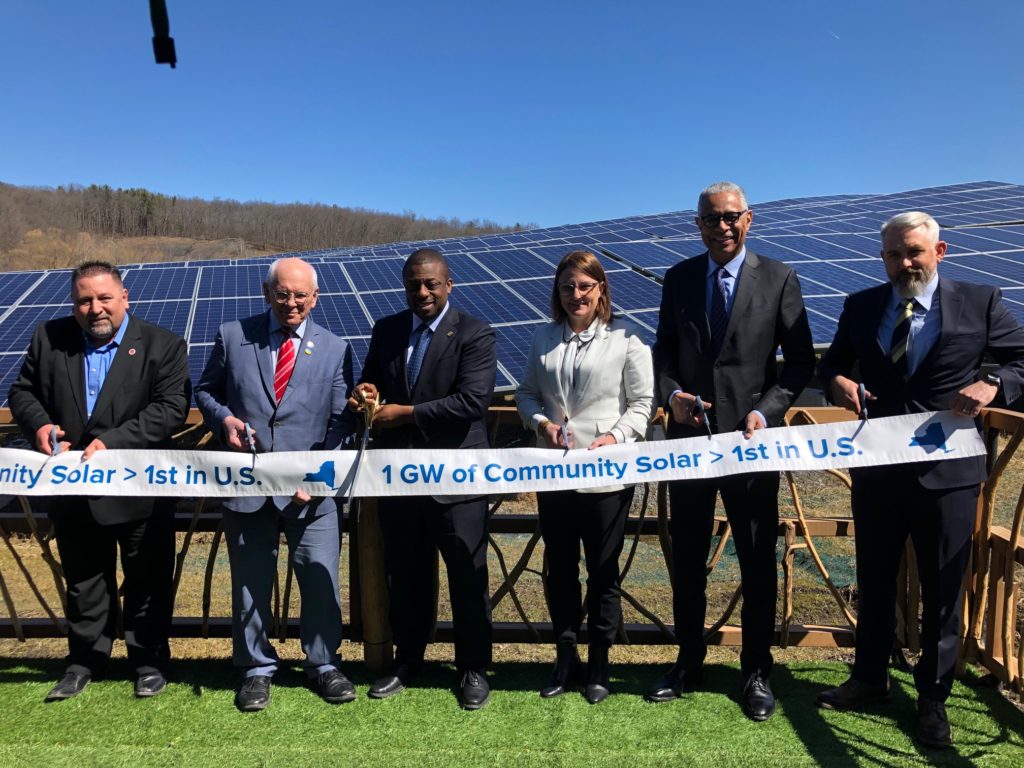
Contributed by Pari Kasotia, Senior Director and Head of Policy, DSD Renewables
According to the International Energy Agency, global clean energy investments are likely to increase by 50% or to $2 trillion by 2030 from approximately $1 trillion today. While this is monumental, the value of these investments will only be realized if it is matched with the pace required for clean energy deployment. Given New York’s upcoming energy storage incentives, we are moving in that direction, with the New York State Department of Public Service (DPS) and New York State Energy Research and Development Authority (NYSERDA) already a step ahead.
In her 2022 State of the Union address, Governor Hochul announced her intention to double the state’s storage target from 3 GW to 6 GW by 2030, with an interim target of 1.5 GW by 2025, of which 87% has already been awarded or contracted. The new target gets New York closer to meeting its mandate set under the 2019 Climate Leadership and Community Protection Act, also known as the Climate Act.
At the end of 2022, the DPS and NYSERDA released the much-awaited Energy Storage Roadmap. This month, NYSERDA followed the release of the Roadmap with a series of webinars that provided an overview of the recommended incentive structure for both bulk and retail/residential sectors. Interested stakeholders have an opportunity to weigh in on the pathways proposed by DPS and NYSERDA by providing comments on the Roadmap by March 20.
In a nutshell, the Energy Storage Roadmap lays out a two-pronged approach to storage deployment. The first prong targets to deploy 3 GW of bulk storage by creating a new Index Storage Credit incentive which is expected to increase value for customers and bring long-term certainty for projects.
The Index Storage Credit incentive is calculated by subtracting the strike price from the reference price. Strike price refers to the dollar amount that project developers need for project economics to work. NYSERDA will create a reference arbitrage price (the price of electricity purchased when it’s the cheapest) and a reference capacity price, which is calculated using the NYISO Installed Capacity spot auctions. The reference arbitrage price and the reference capacity price, together, form the reference price. The delta between the strike price and the reference price will constitute the incentive that NYSERDA pays the developers.
The second prong targets 1.5 GW of retail storage and 200 MW of residential storage.
For the retail sector, the Roadmap proposes to mirror the past incentive structure of region-specific, declining incentive block structure, which included specific blocks for New York City, Westchester, Long Island, and the rest of the state. Storage systems procured through this program will range from 4 to 8 hours in duration. NYSERDA intends to utilize its research, development, and demonstration arm to explore and support long-duration storage of 10+ hours to plan for storage deployment beyond 2030.

The benefits of energy storage in New York couldn’t be more unique and crucial. Currently, the state has 4.5 GW of fossil-fired peaker plants, a majority of which are located in New York City, Long Island, and the Lower Hudson Valley. These peaker plants provide power during high electricity demand periods and are also used for reliability and operating reserves. Because they are powered by fossil fuels, they not only contribute to climate change, but fumes from these plants impose an adverse health impact on low-income and disadvantaged communities that are located next to these peaker plants.
By calling on storage systems to provide power during high electricity demand periods, these peaker plants could be retired early or replaced with clean energy resources. In fact, in their roadmap, DPS and NYSERDA have called for at least 35% of the program funding to be utilized for projects in areas that create the highest benefits for disadvantaged communities and result in peaker plant reductions. This additional incentive can be stacked with the Inflation Reduction Act’s (IRA) 10% bonus tax credit adder for clean energy projects located in “energy” and “low-income” communities. This creates a win-win situation for both project developers and consumers – by bringing down the risks to developers by offering additional incentives, developers are more likely to deploy projects in these communities which will result in positive health and well-being outcomes for local residents.
Nevertheless, energy storage deployment in New York will only be successful if other pieces of the puzzle neatly fit together. IRA and state incentives are expected to create an unprecedented charge to bring more projects online. In an already supply chain- constrained market, developers that have procurement arrangements already in place will rise above the competition. Storage markets are likely to see an increase in material prices due to this increased demand, so developers must build in price escalations to ensure a sufficient cushion against fluctuations in material prices. Additionally, regulatory barriers such as long interconnection queues, obscure permitting processes, and zoning constraints can all impact project timelines and finances. Fortunately, New York’s energy leaders are aware of these potential impediments and are working closely with the solar and storage trade associations to overcome them efficiently and expeditiously.
Pari Kasotia is Senior Director and Head of Policy at DSD Renewables (DSD) based out of Schenectady, NY.